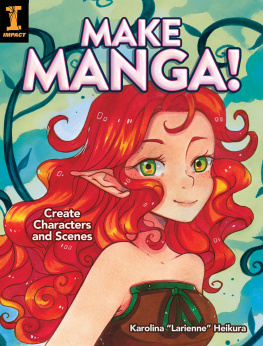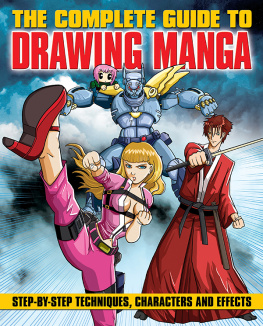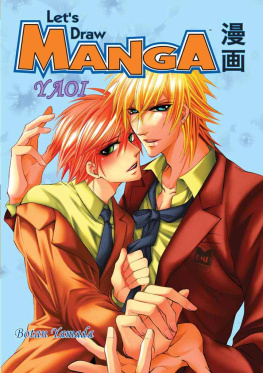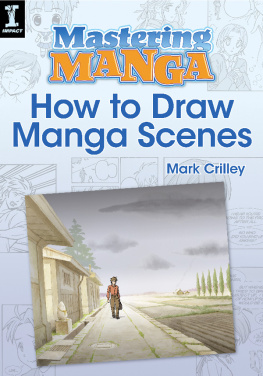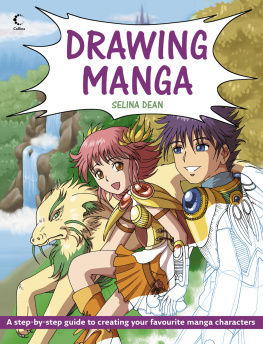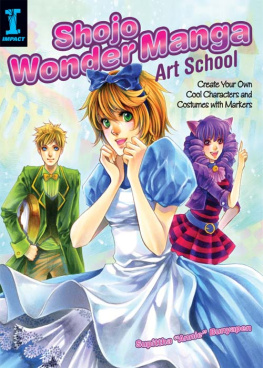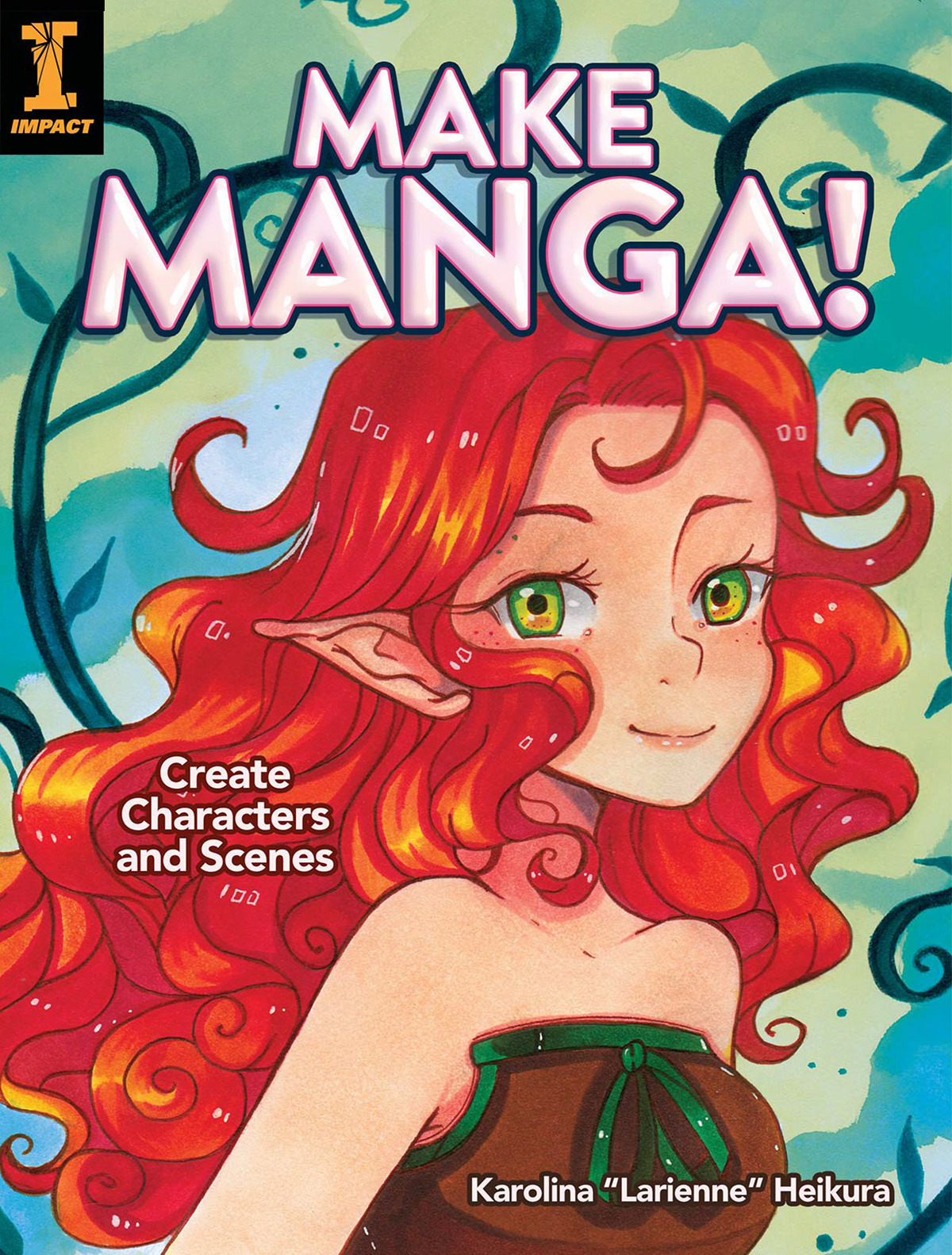Contents
Guide
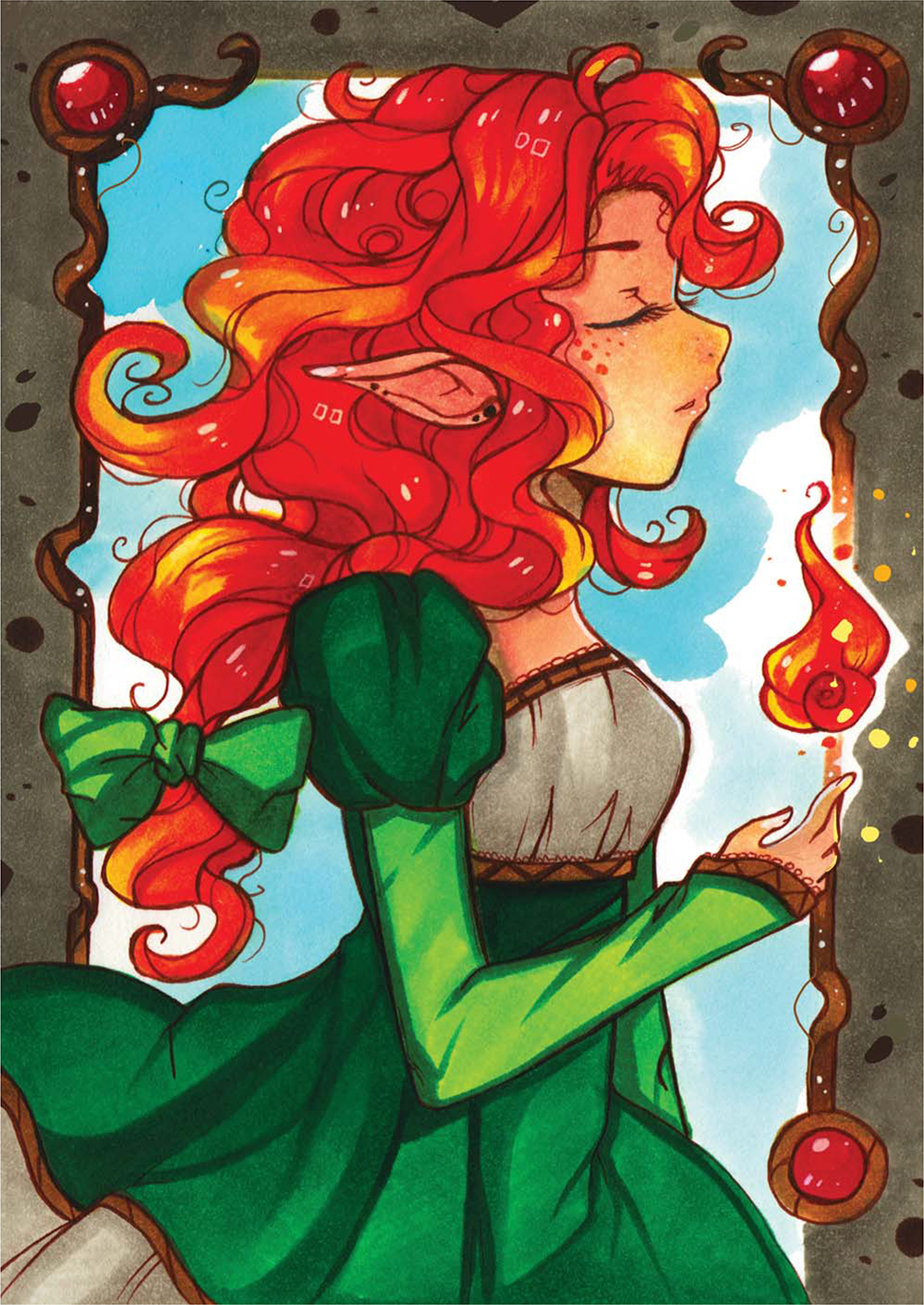
MAKE
MANGA!
Create Characters & Scenes
KAROLINA LARIENNE HEIKURA

CINCINNATI, OHIO
IMPACTUniverse.com
TABLE OF
CONTENTS
WHAT YOU NEED
Surface
drawing paper
watercolor paper
Sketching Tools
eraser
mechanical pencil
multiliner pen
Coloring Tools
markers
watercolor brushes
watercolor paints
white gel pen
Optional
anatomical puppet
silver marker or pen
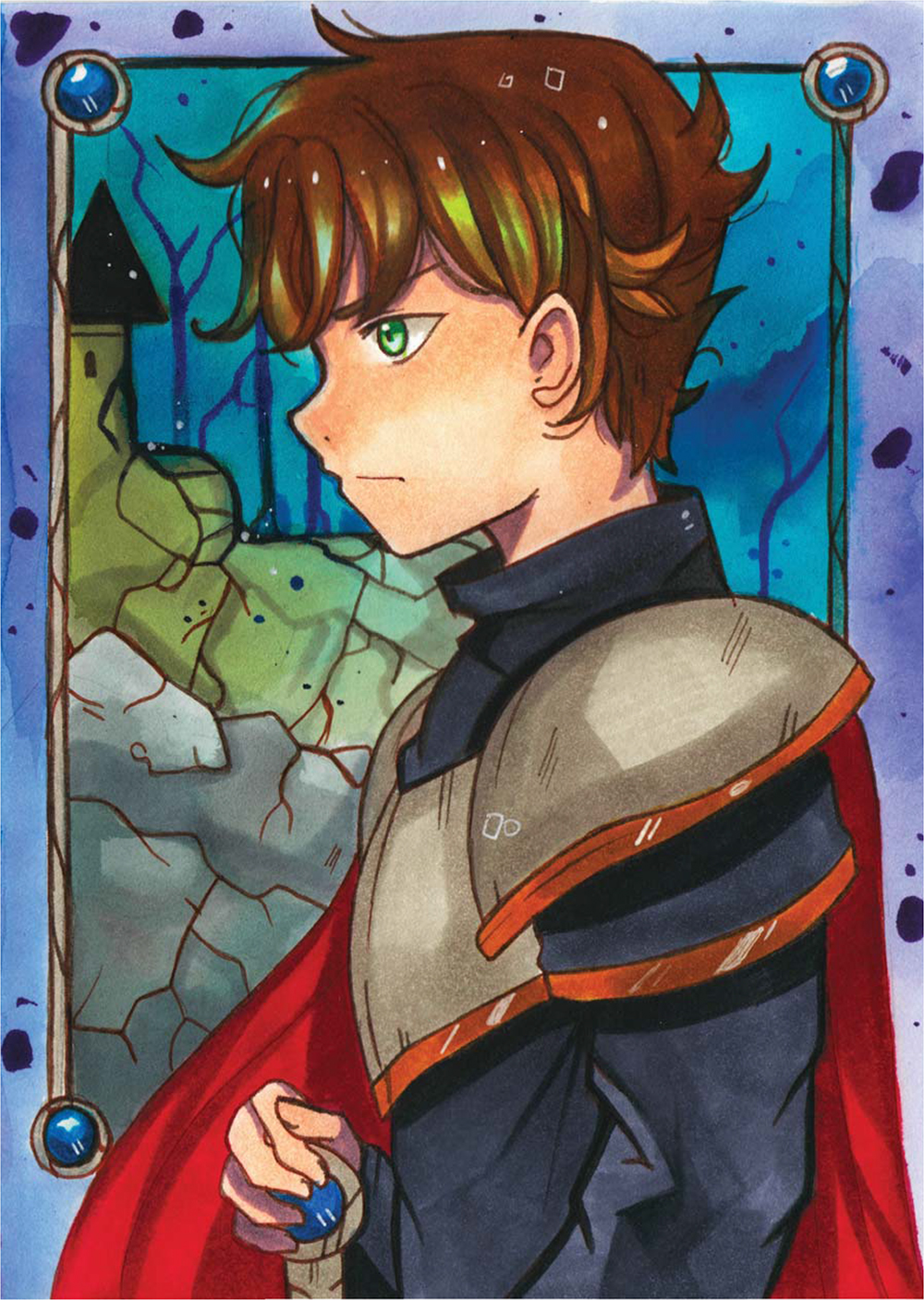
Introduction
What does it mean to be an artist? One of the key elements of being an artist is the ability to bring your own vision to life. This ability is strongly connected to creativity and all the possibilities of creating a work of art. I believe that each of us is unique and bringing that uniqueness of ourselves into our art is what makes it special. While knowledge of anatomy or fine painting skills may give you a significant advantage, the ability to exercise your own creativity is no less important.
This book will take you through the basics of sketching faces and figures, as well as designing clothing, accessories and backgrounds, so you can create your own characters and place them in fantastic scenes and settings. When it comes to the coloring process, we will focus on traditional media such as watercolors and markers and explore what these tools can do when you combine them.
Regardless of the type of art you wish to create, the goal of this book is to stir your imagination, to give you ideas for executing your illustrations, to help you discover your own means of expression and to inspire you on your artistic journey. So dont wait any longerthe art world is waiting to see your personality expressed!
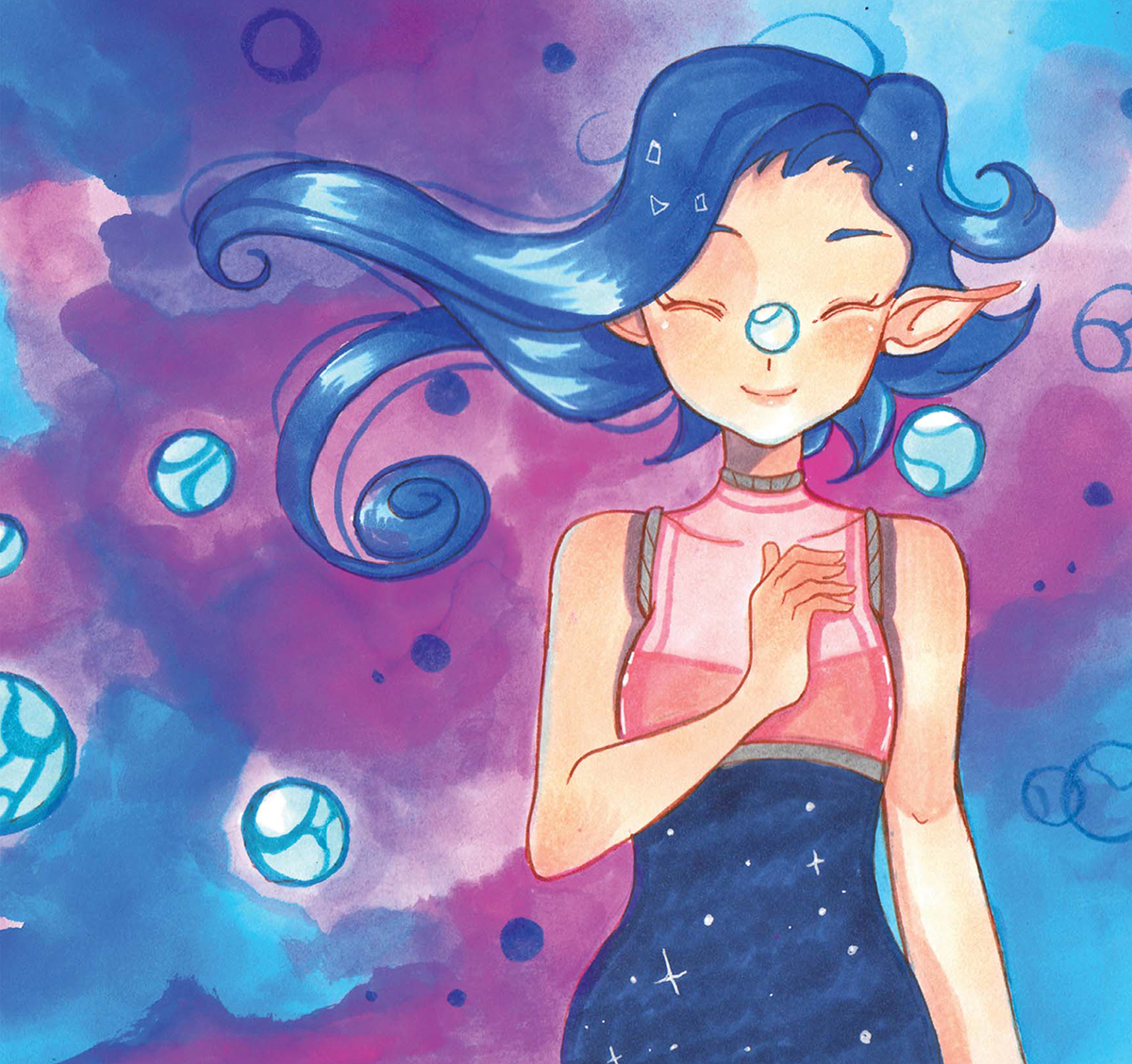
TOOLS & SUPPLIES
There are many art tools that can help you create stunning pieces. Although tools do not make the artist, they can definitely help make the artistic process smoother and more pleasent. The following supplies were used to create the pieces featured in this book. Experiment to find what works best for you.
Paper
Choosing the correct paper is important to achieving a successful final result. If you plan to use watercolors, then your sketch should be done on watercolor paper. Watercolor paper also works well with markers. Just be aware that using markers on watercolor paper over a long period of time may damage the nibs. (Though these can be replaced.) If you dont plan to add color to your sketch, any type of paper will work. Working in a sketchbook will make it easier to keep your drafts organized.
Pencils
Pencils are available in a range of lead types, from soft to hard. I normally use a Pentel mechanical pencil with 0.3mm HB lead, but any brand is fine. The main advantage of mechanical pencils is that the lead can be refilled or switched out for a different size or type. Choose the type of lead based on what you want to sketch. Small details are best drawn with very soft, thin leads like H or HB. Shading bigger areas is best done with a harder lead, such as B, 2B or even 6B.
Markers
Markers are one of the most popular traditional coloring tools. They work well with both watercolors and colored pencils, and they come in a wide range of colors. In my experience, brush-nib markers are the most comfortable to work with because they give you better control over the amount of ink being applied. Some brands, like Copic markers, offer markers with refillable ink cartridges. These may be worth purchasing for the most used colors in your collection.
Watercolors
Watercolors have been gaining popularity as a coloring medium due to the array of fresh and vibrant colors available. Both liquid and standard watercolors are exceptionally economical because they can be used for a long time, so investing in quality watercolors will pay off in the long run.
Brushes
There are various sizes and types of brushes available. I prefer to use only a few watercolor brushes: size no. 2 for small details and sizes no. 3 or no. 4 for everything else.
Multiliners
Once you have finished your sketch, a multiliner pen is a great tool for outlining. There are many different brands and levels of thickness to choose from. As with pencils, thinner multiliner pens are better for small details. Many artists choose not to use black multiliners, but rather color the lineart with variations of brown, red, blue or pink for a more natural look once the sketch has been colored in.
Supplies for Adding Finishing Touches
There is almost no limit to what can be used when you are ready to add finishing touches to your work.
- Pastels work great when mixed with watercolors and usually work well for covering large areas.
- Pens can be used to add details like a characters eyebrows or to strengthen certain lines to provide a variety of line weights.
- Gold or silver markers can be used to decorate frames, ornaments, jewelery or clothes. The ink is not transparent, so they can cover areas that have already been colored with other media.
- Fluorescent markers are perfect for adding a special glow to an area of your illustration or for highlighting specific elements within the composition.
- Colored pencils are great complementary tools for watercolors and markers. While I dont use them in this book, you can use them to add details and put emphasis on certain elements of the illustration. They are often used to add more shading to the skin.
- White gel pens are the indispensible tool of every traditional manga artist. They are most often used to add glow and highlights to an illustration. Alternatively, white opaque paint can be used instead.
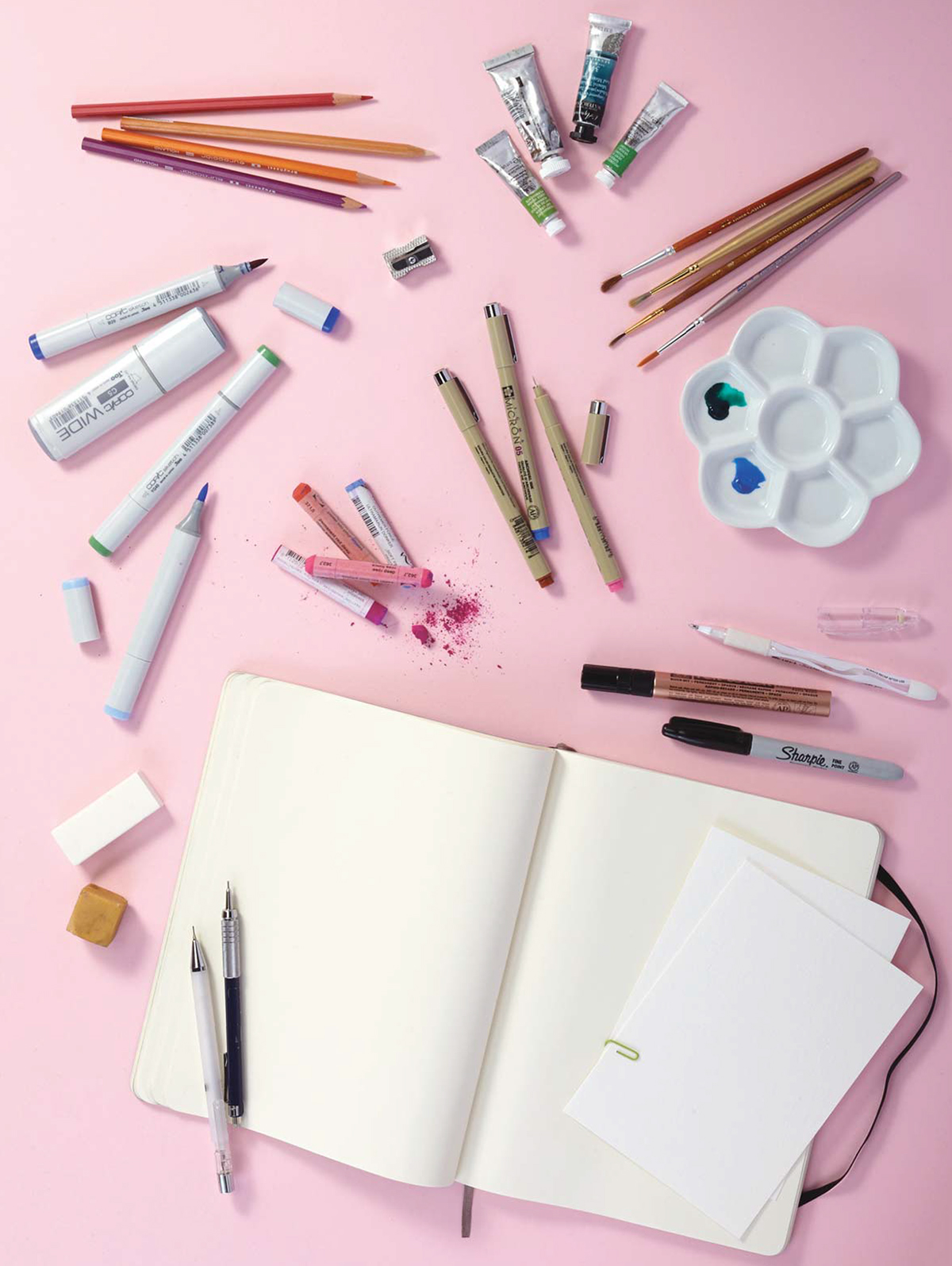
CHAPTER ONE
The Basics
Possessing knowledge of basic human anatomy can be incredibly helpful, especially if you are just starting out on your artistic journey. For this reason, we will take time to study fundamentals of anatomy and practice applying them while drawing manga and anime characters.
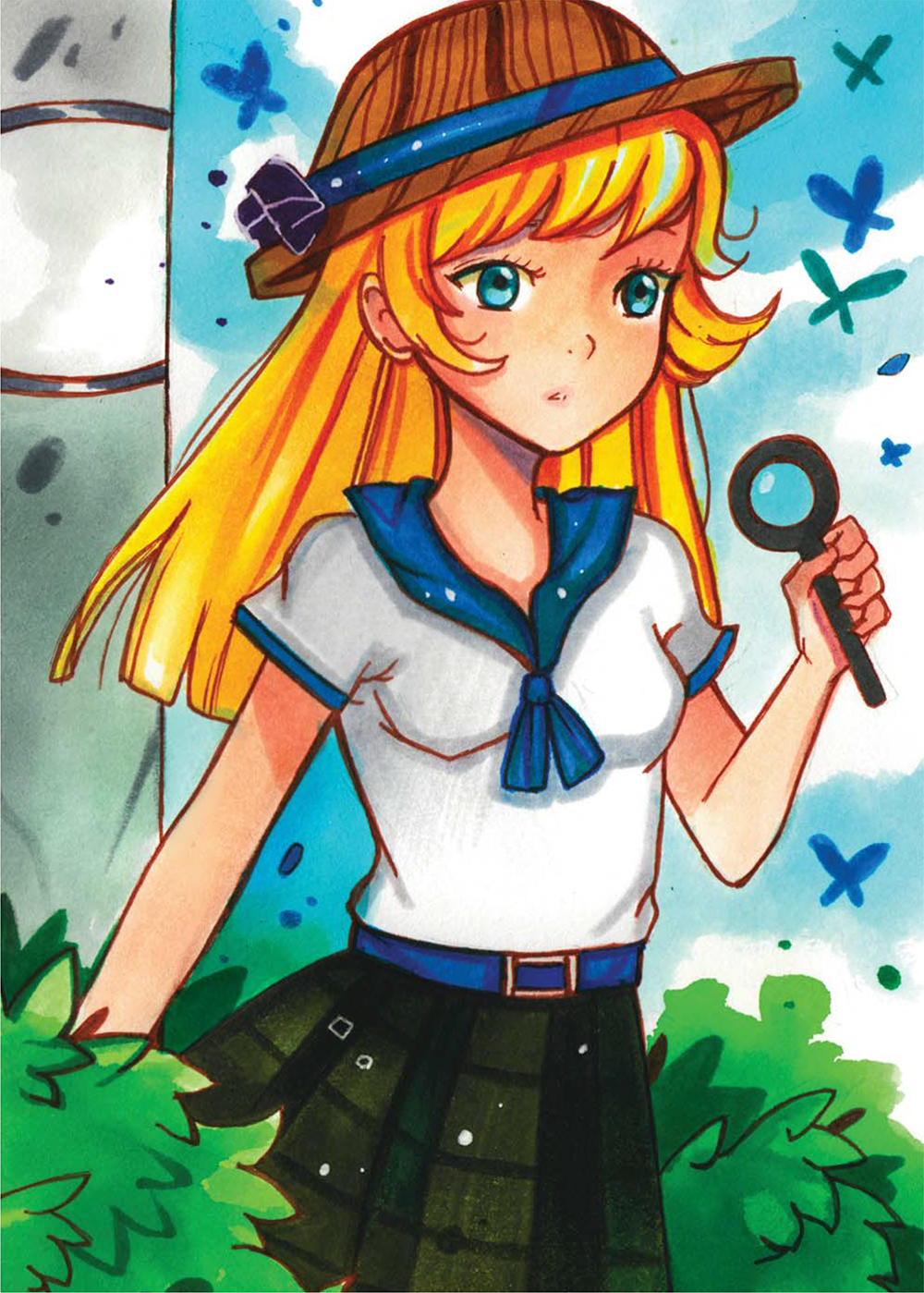
BODY BASICS
Human bodies can be quite simplified in the manga style, but they still must follow the rules of anatomy. The more anatomical rules you apply, the better the figure will look. Before you can begin playing around with body proportions, you must learn the basics. As manga style continues to evolve into more and more detailed forms, you will be able to bend and adjust as needed, so long as you have a solid foundation in the basics of body anatomy.
When drawing the human figure, we measure the body height in heads. A male figure of average height should be about seven heads tall. The average female figure height would be about six heads tall. A child might be only three or four heads tall. Simply add and remove heads until you get to the height you desire for your character.

